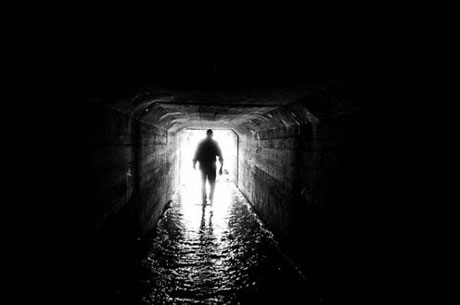The mystery of life inside the dead
Reviving the deceased is a matter of appearing only in sci-fi movies, but in fact doctors can save the lives of the dead in some cases.
>>>The truth about 'light at the end of the tunnel'
In 1999, Anna Bagenholm - a Swedish medical student - lost her balance while skiing. She fell and was about 0.2m thick of ice and snow covered near a mountain stream, only skis and ankle parts protruding. Bagenholm found an air hole under the snow and tried to resist waiting for the help. Then the female student heart stopped beating but she still lived. The rescue team took 40 minutes to remove snow and save Bagenholm and take her to the hospital by helicopter. Nearly 4 hours after the accident, her heart just returned.
Livescience said, Bagenholm is a typical example of clinical death, by the respiratory system, her circulation has stopped working within three hours. So what happened to the cell level in Bagenholm's body during the time her heart stopped? Does death die with consciousness? And how long can she live after blood doesn't flow?

Dr. Honglin Zhou and colleagues at the University of Pennsylvania said that the Bagenholm case helped them gain more hope in their efforts to find ways to save the 'dead' people when the heart stopped for the same time, even even longer. If that is found, it could become a breakthrough in treating heart attacks and redefining the line between life and death.
The researchers said that important developments are at the cellular level. Each cell has a tightly sealed membrane outside to filter unnecessary molecules for its functions or existence. When a cell is dying, the covering membrane begins to weaken. Depending on the state of the dead cell, one of the three things will happen: it will send a 'kill me' signal to a cell that serves as a maintenance for this cell to 'eat' and recycle. substance inside it; it will destroy itself; It shatters and sprayes material into the surrounding environment, causing inflammation and further tissue damage.
If the integrity of the outer membrane is broken, the fate of the cell will cease.
'In case the cell's permeability level is so high that the material inside leaks out, its death is an irreversible trend , ' Zhou said.
When oxygen, the nutrients that cells receive from the blood are abruptly cut off, the cell can still maintain its existence in the membrane for quite a long time. Life persisted for several days after people fell into unconsciousness, blood stopped circulating and many other organs stopped working. If the doctor can cure the person in distress before the material inside the cell comes out, returning from the dead is likely to happen.
Unfortunately, brain cells are the most deadly cells without nutrients and oxygen. Within 5-10 minutes after the heart stops, the outer membrane of the nerve cell will rupture and cause irreversible damage in the brain. Resurrection efforts become more difficult, because cells that are not provided with oxygen and nutrients for a long time will self-destruct very quickly.
One of the ways to reduce the risk of brain damage is to reduce the patient's body temperature, Zhou's group said. Thanks to this method, sometimes a few dozen minutes of clinical death can still be saved. Bagenholm recovered at the hospital because her body temperature dropped to 13 degrees C while being buried under snow.
- The phenomenon of 'seeing heaven' through the words of the dead goes back to life
- The mystery of the dead parts comes back to life
- 3-year-old boy accuses his killer of
- The mystery of the dead galaxies
- The groundbreaking project studies how to raise the dead
- Decipher the mysterious 'warm snow' of the Dead Sea
- The mystery of decaying dead bodies
- Why do the Egyptians marvel?
- Unexpected facts about the Dead Sea
- Past on the 'Island of the Dead'
- Dead and alive again - The phenomenon of wonder and explanation
- Is Ma real or not?
 The truth about the mysterious red-haired giant at Lovelock Cave
The truth about the mysterious red-haired giant at Lovelock Cave Inunaki Tunnel: The haunted road leading into Japan's 'village of death'
Inunaki Tunnel: The haunted road leading into Japan's 'village of death' The mystery of the phenomenon of human reflection before dying
The mystery of the phenomenon of human reflection before dying 6 mysterious phenomena, although science has been developed for a long time, still cannot be answered
6 mysterious phenomena, although science has been developed for a long time, still cannot be answered Death is not the end: New mathematical models show cells can be revived!
Death is not the end: New mathematical models show cells can be revived!  Breakthrough in human cell mapping project
Breakthrough in human cell mapping project  New research: 'Microplastics promote cancer metastasis'
New research: 'Microplastics promote cancer metastasis'  China released the world's first robot cloned pig
China released the world's first robot cloned pig  How the influenza virus works
How the influenza virus works  Why are there so many germicides but so few anti-virus?
Why are there so many germicides but so few anti-virus? 